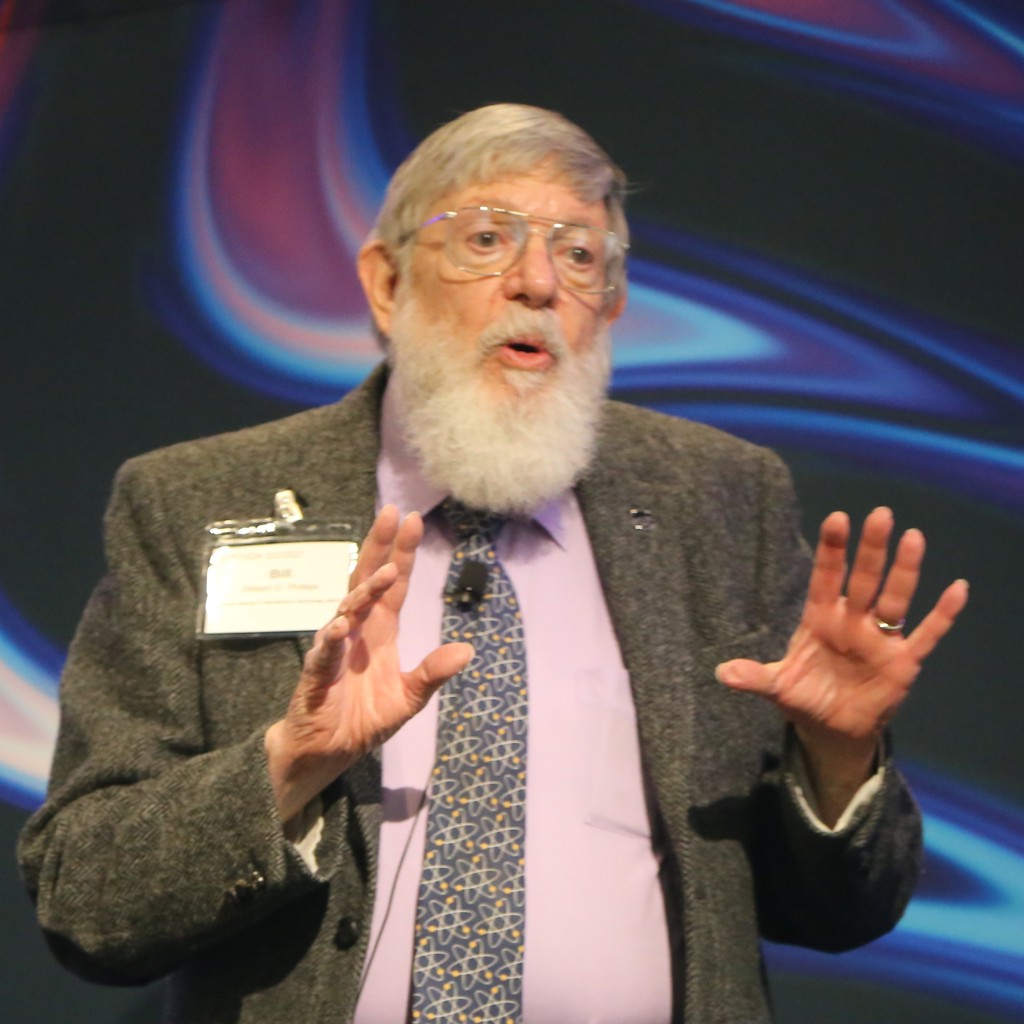William D. Phillips
William D. Phillips
.JPG?width=2568&height=2568&ext=.jpg)
Nobel Laureate and OSA Honorary Member William D. Phillips was born on 5 November 1948 in Wilkes-Barre, Pennsylvania. As a young boy Phillips was interested in science and spent much time building with Erector sets and experimenting with microscopes and chemistry sets. At Juniata College in Huntingdon, Pennsylvania, physics became a passion. Supervised by Wilfred Norris, Phillips rebuilt an X-band electron spin resonance (ESR) spectrometer and tried to resolve discrepancies in the literature about ESR line-widths. During his senior year he spent a semester doing ESR at Argonne National Laboratories, working with Juan McMillan and Ted Halpern.
After graduation, Phillips attended the Massachusetts Institute of Technology and worked with Fred Walther on the high-field hydrogen maser, another X-band magnetic resonance spectrometer. For his thesis research Phillips measured the magnetic moment of the proton in water. By the time he completed the measurement, tunable dye lasers had become commercially available and had found their way into the MIT lab. Phillips wanted to learn more about lasers and embarked on an experiment to study the collisions of laser-excited atoms. He wrote up both experiments for his thesis and defended it in 1976.
For the next two years Phillips worked on collisions and Bose-Einstein condensation (BEC) in spin-polarized hydrogen through a Chaim Weizmann Fellowship. In 1978 he accepted a position at the National Bureau of Standards (NBS) (later renamed the National Institute of Standards and Technology-NIST) working on precision measurements of the proton gyromagnetic ratio and of the Absolute Ampere. Phillips experience with lasers and atomic physics also earned him the opportunity to devote some of his time to exploring ways of improving measurement capabilities using those tools. He used that opportunity to pursue laser cooling for which he won the Nobel Prize in 1997.
His work in laser cooling has led to a number of discoveries in understanding low-temperature behavior of matter. His group showed it was possible to chill atoms well below the accepted limits down to a few microKelvins, or just millionths of a degree above absolute zero. This discovery paved the way for scientists seeking to create Bose-Einstein condensation, an exotic new form of matter in which atoms all fall into their lowest energy levels and merge into a single quantum state. Phillips and his team at the Laser Cooling and Trapping Group at NIST continue to study ultra-cold trapped atoms with spin-off applications for improved accuracy in atomic clocks and in fabrication of nanostructures. Phillips also serves as Distinguished University Professor of Physics at the University of Maryland.
Among his many awards are the Franklin Institute’s Albert A. Michelson Medal, U.S.
Multimedia
Document Created: 26 July 2023
Last Updated: 18 June 2025
